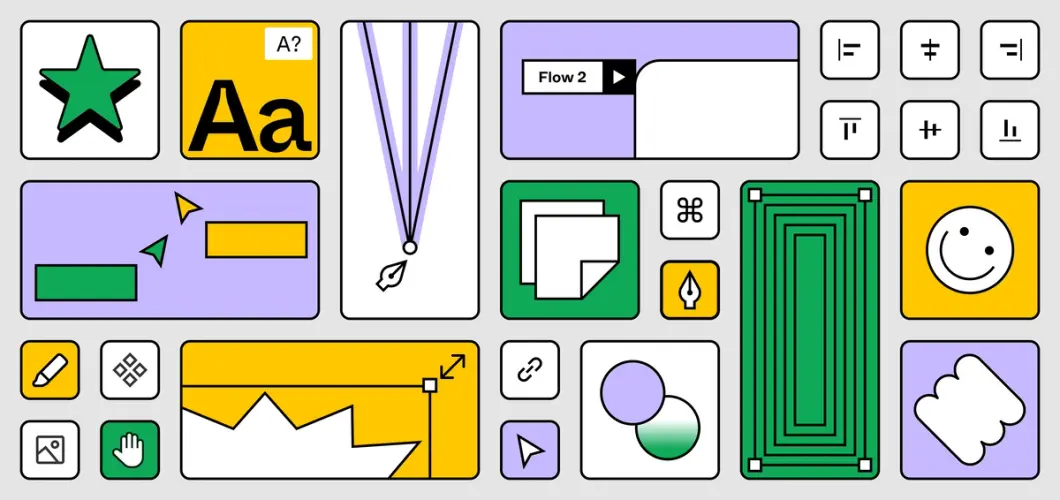Mouthpiece
Team 305
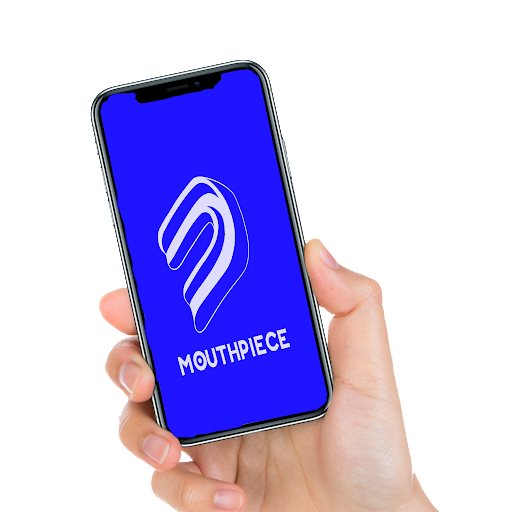
Team 305
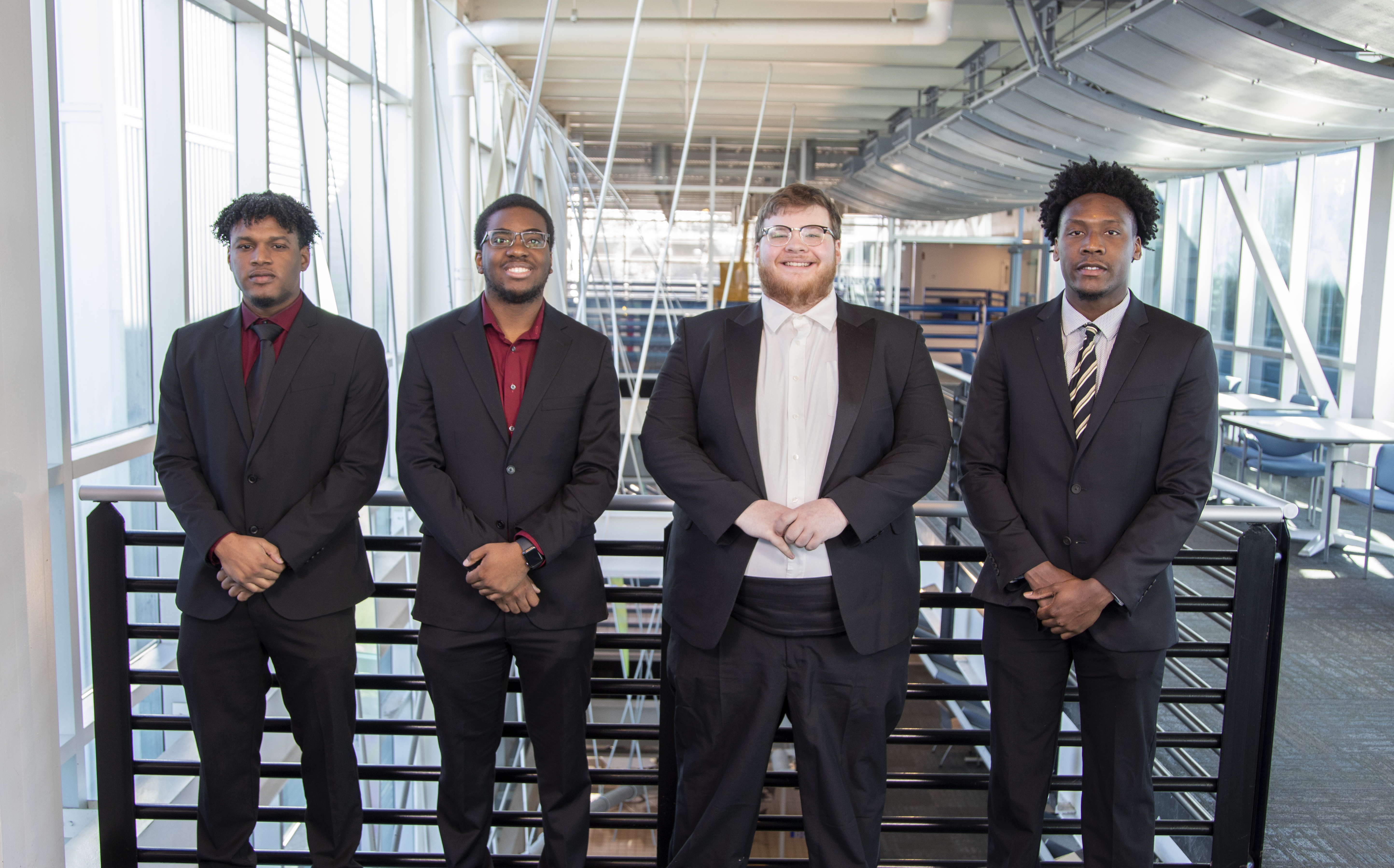
Taken January 27th 2023 @ FAMU-FSU College of Engineering Campus

My name is Ian Tyrell, a senior Computer Engineering student with a keen interest in web development and entrepreneurship. I hail from South Florida, where I usually spend my leisure time either at the beach or playing basketball at different parks. During my sophomore year at FSU, I discovered my passion for coding C++, which subsequently led me to learn JavaScript for web development. With JavaScript, I have developed several web applications, and I am now eager to broaden my knowledge in iOS Development. My ultimate goal is to make Mouthpiece the final destination in my tech journey.
Hey! My name is Peyton Smith, I’m a senior Computer Engineering student at Florida State University. At a young age, I have had a passion for math and science which then led me to explore the world of computers and technology. During high school, I had a strong passion for math, tutoring fellow classmates and assistant teaching our high school algebra class. As I entered college, I was new to coding but quickly grew to enjoy it. Starting with C++, I then delved into engineering-focused languages such as MATLAB and C, before progressing to higher-level languages like C# and self-learning web development using HTML, CSS, and JS. My personal projects have also allowed me to expand my skillset to include Python, and currently, I am learning iOS app development with Swift for our senior design project! I'm happy with my journey so far, and I'm excited to see what the future holds for the years to come.

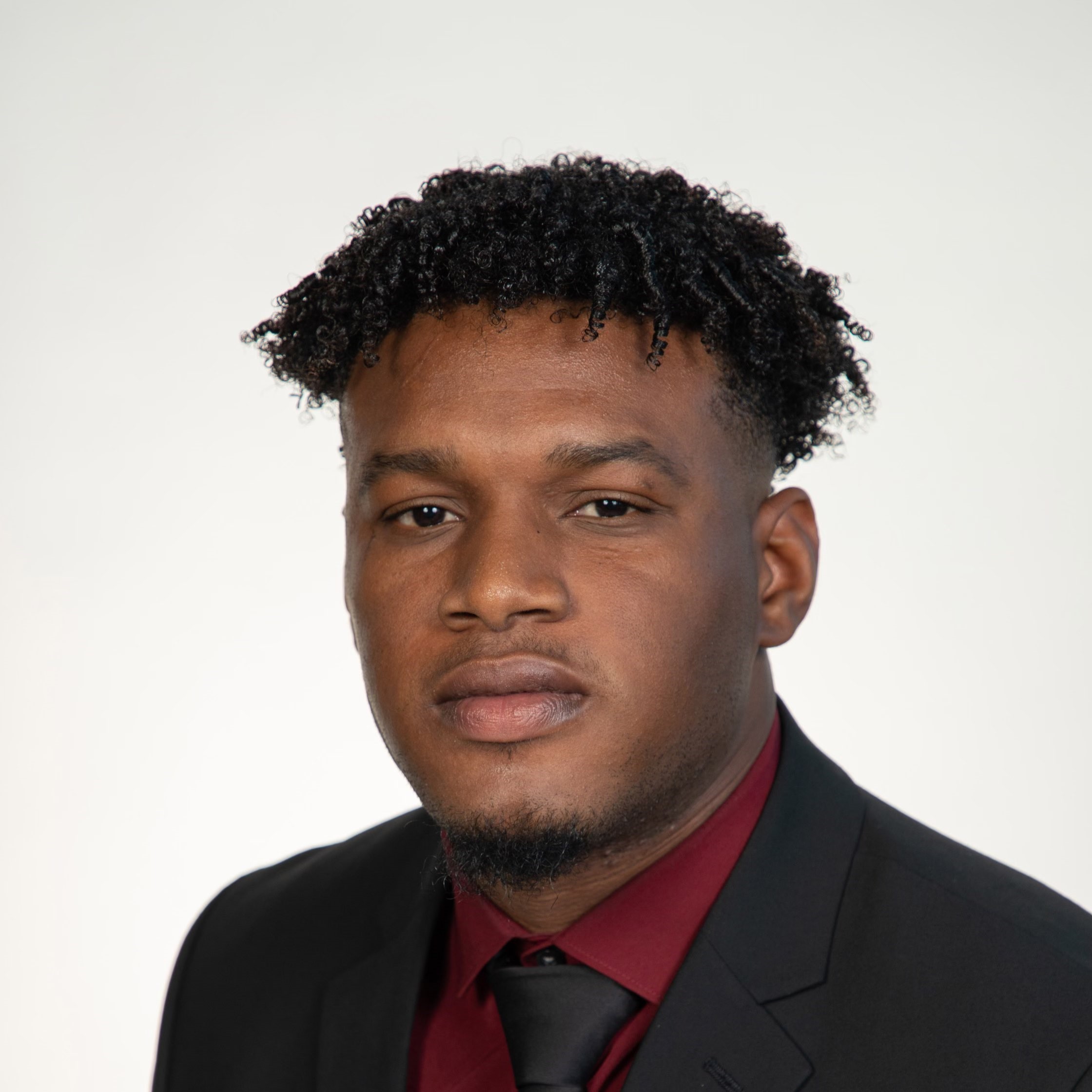
My name is Julien Denis. I'm a Computer Engineering Major at Florida Agricultural & Mechanical University. I'm from the friendly island of St. Maarten, which is the Dutch side. I speak four languages, and I'm the first student from the island to make it this far in my major. I aim to graduate with a bachelor's degree and make my family, friends, and island proud. I also want to land a great job in America when I'm done. It might not be easy because I'm an international student, but I just got to have faith. My main goal is to be successful in life!
My name is Christan Robinson. I am a Computer Engineering Major at Florida State University. I'm from Ft. Lauderdale, Florida. I discovered my passion for technology by tinkering with computers at a young age. My early memories of programming were in middle school. After school, I would edit Minecraft config files for a server I was running with my friends. I had such a passion for doing this but didn't know then that what I was doing was programming. Once I got to college, my original major was Software Engineering. After taking an Intro to Programming course, I wanted to be involved more in the hardware side of computers as well, so computer engineering seemed like a perfect fit. I threw myself into the field and took on personal projects to further my understanding and gain more experience. Even as I'm soon graduating, I continue to expand my knowledge of this ever-evolving field. I am just as passionate about it as I was when I first discovered it. I look forward to pushing the boundaries of what's possible with computers in the future.
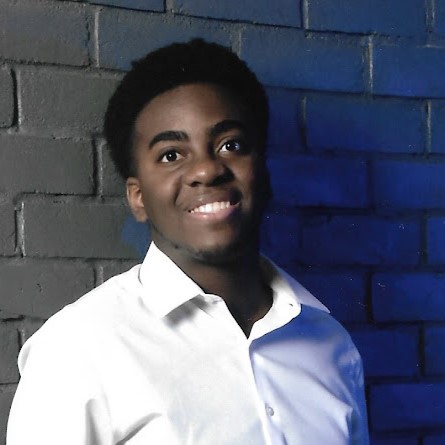

Mouthpiece is a social media app used to share posts, pictures, and videos for a community of those interested in sports. This app connects athletes, sports fans, coaches/recruiters, trainers, and tournament organizers throughout the world. Athletes can gain a fan base by posting pictures, videos, and highlight reels which give exposure to coaches/recruiters. As for the recruiters, they can find out players' capabilities and assess their statistics. Trainers can find and help develop players by professionally training them. Teams can use this app for player scouting, analyzing their strengths and weaknesses. The main purpose of the app is to highlight the skills shown by athletes, enabling the chance of scholarships or job opportunities.
As for the construction of the project, our group is separated into both front and back-end developers. Front-end developers are responsible for how the app looks to the end-user. They design the user experience such as plotting what each button click does throughout the app. Back-end developers manage how the app operates under-the-hood. Using Google’s database, Firebase, they are responsible for storing data throughout the app such as user profile data, messages, posts, and tournament data. The app is for iOS devices starting out. Using an iOS exclusive IDE, Xcode, developers code the app using Apple’s programming language, Swift.
Unlike other social media platforms such as Twitter, Instagram, and TikTok, this app is solely focused on sports-related content. This is made possible by an internal filter system in the app that monitors the type of content posted. Users are also able to sort the type of sports content they wish to see through embedded algorithms in the app. Overall, this app is a great choice for sports fans seeking convenient sports content without being overwhelmed by any other irrelevant content.
The development process for software applications generally involves three stages: planning, development, and polishing. During the planning stage, project goals and technical requirements are established. The development stage involves coding and building the application, including testing and debugging. Finally, during the polishing stage, the application is refined and optimized for performance, security, and usability. By following these stages, developers can ensure the successful creation and deployment of a high-quality software application.
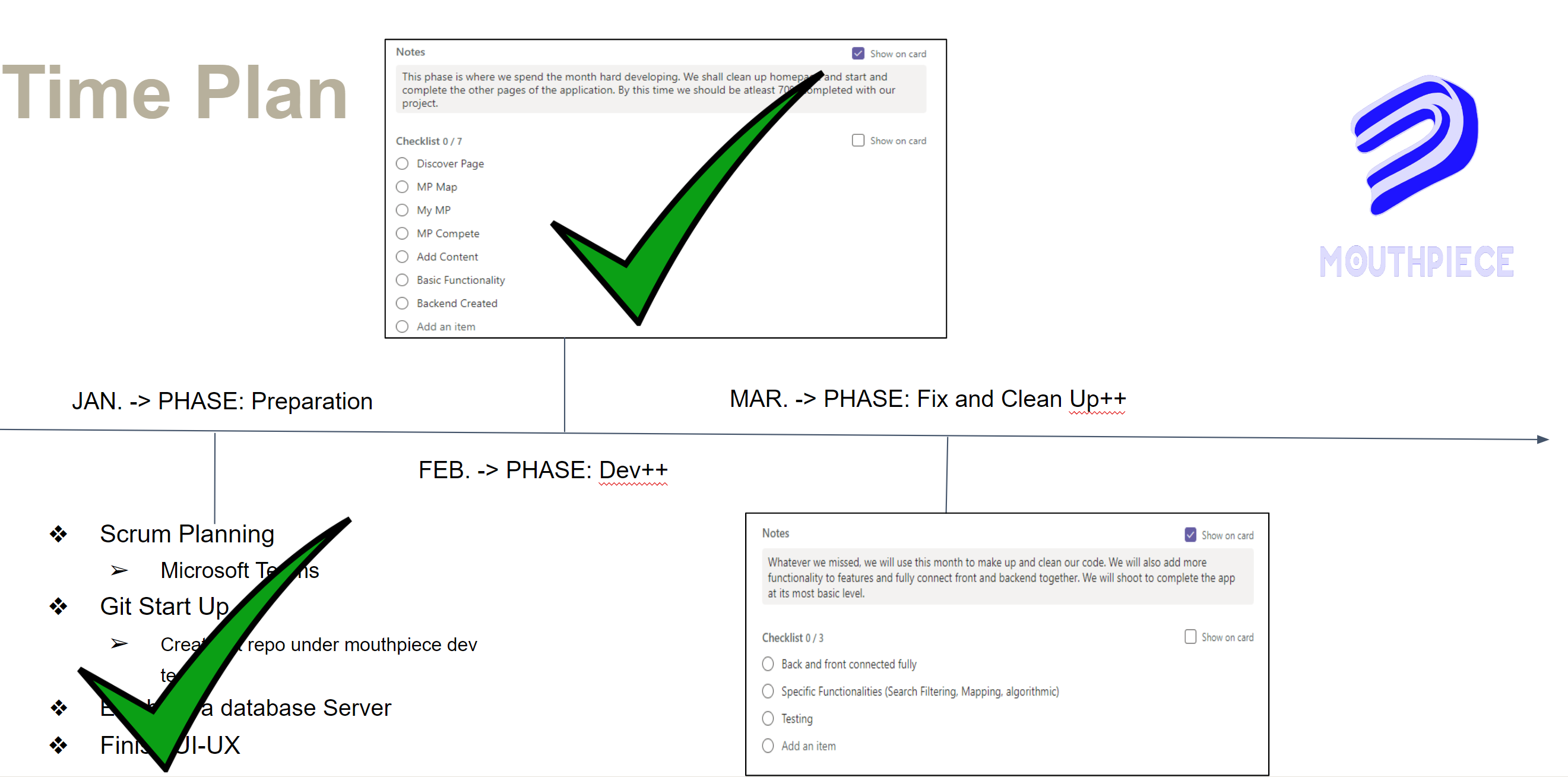
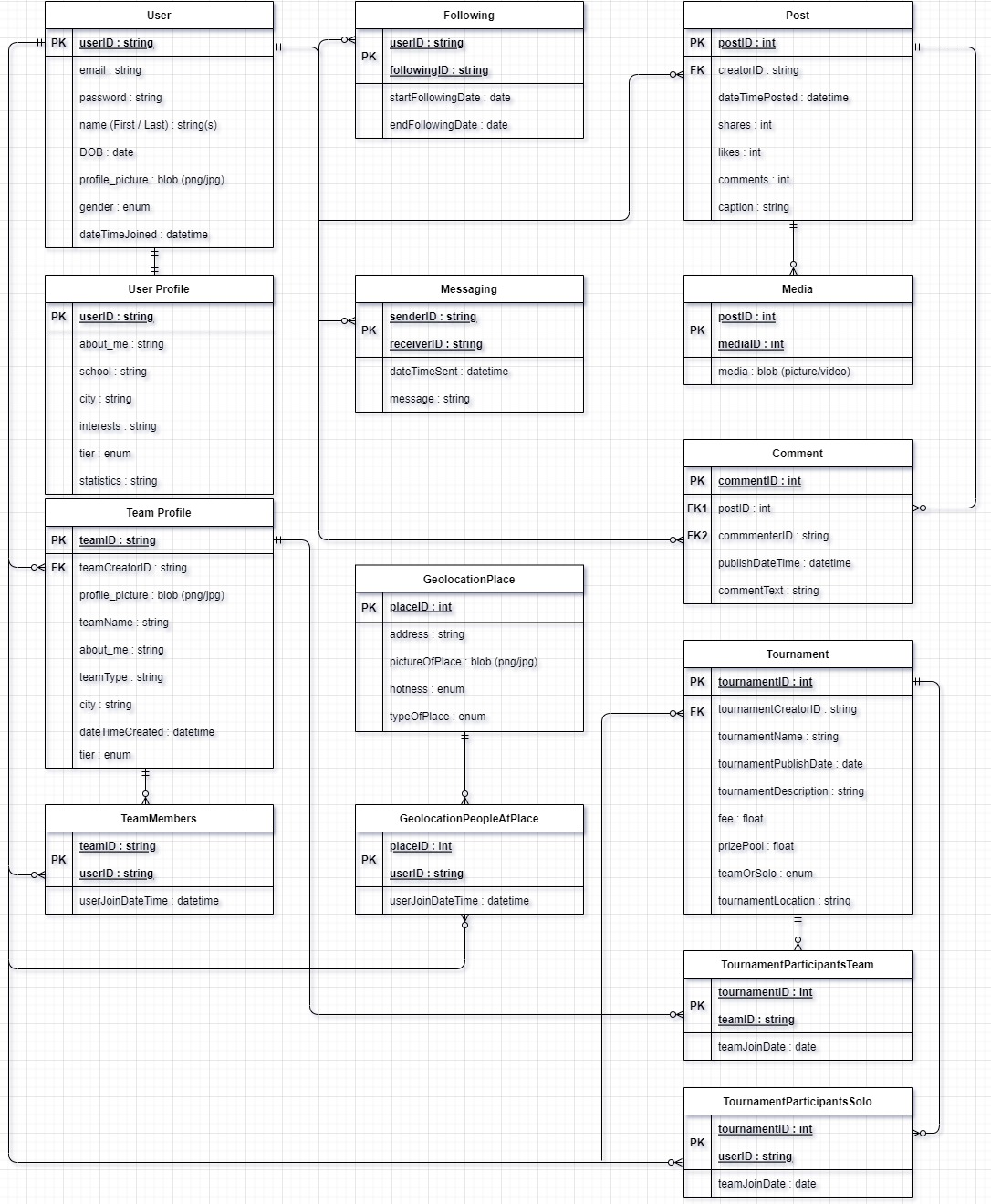
As part of the planning stage, one crucial step needed to design any application is to plot out the architecture. It is important as developers to plan out all of the app's functionality and what all you plan to implement. For us, our method of planning this out is by writing out the ER Diagram for the back-end. An ER (Entity-Relationship) diagram is used to plot out the architecture of how the models will be constructed in the codebase. As you can see, the diagram stores basic info such as user and team information, post messaging data pertaining to each user, to other more complicated features such as geolocation storage and data for any tournament functionality we plan to implement. With this being said, it gives us a clear picture of what all we need to implement on the front-end to eventually connect to the back-end. With the back-end plotted out, we can move on to the next step of designing the front-end's UI/UX.
To ensure a smooth development process, we utilized Figma to design the front-end of our social media app. Figma is a powerful design tool that enabled us to create and collaborate on our design in real-time. By using Figma, we were able to visualize the app's layout, user interface, and user experience before starting development. This allowed us to make necessary changes and ensure that we had a clear and well-defined plan before beginning the development stage. Overall, using Figma for front-end design was instrumental in creating a well-designed and functional social media app.
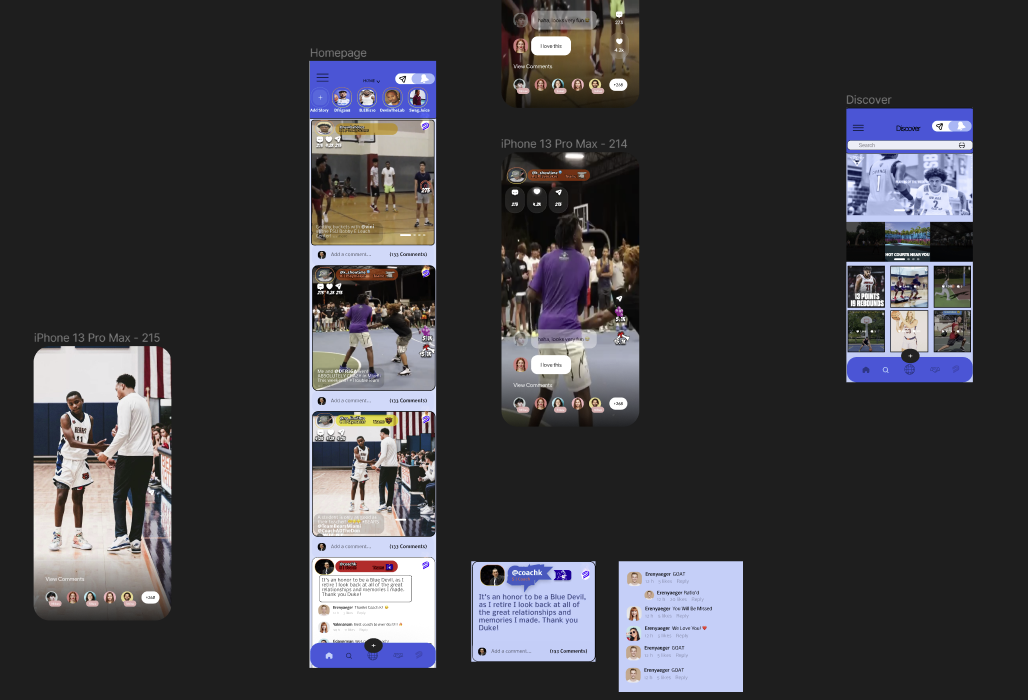
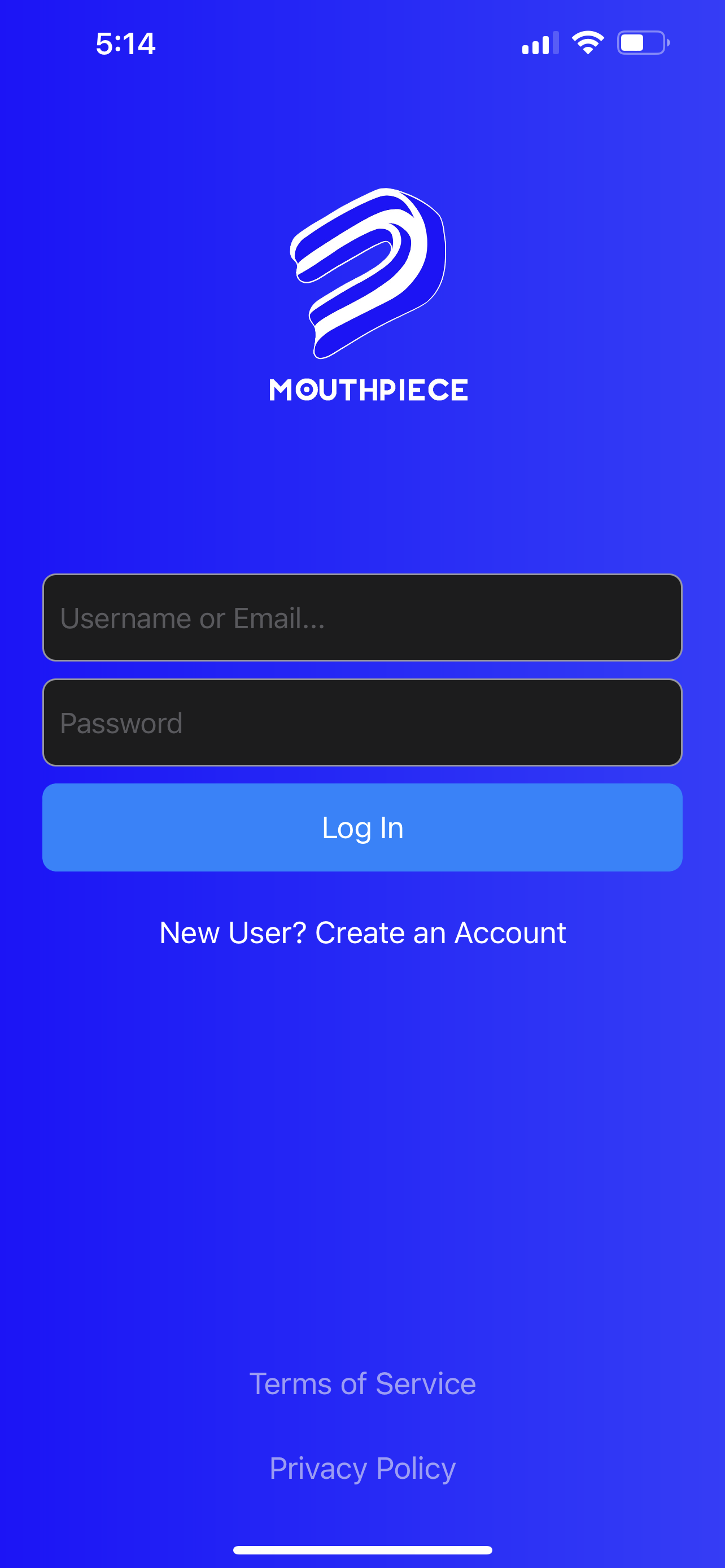
To develop our iOS app, we utilized Xcode, Apple's Integrated Development Environment (IDE) for building applications on their iOS platforms using their programming language, Swift. Xcode offers a suite of tools and features that allowed us to create and test our app's functionality in a seamless manner. By using Xcode, we were able to build and debug our app efficiently and effectively, ensuring a smooth user experience. Additionally, Xcode offers features such as Interface Builder, which allowed us to create a visually appealing user interface for our app. In summary, the use of Xcode was crucial to our iOS app development process, enabling us to build a high-quality app with a great user experience.
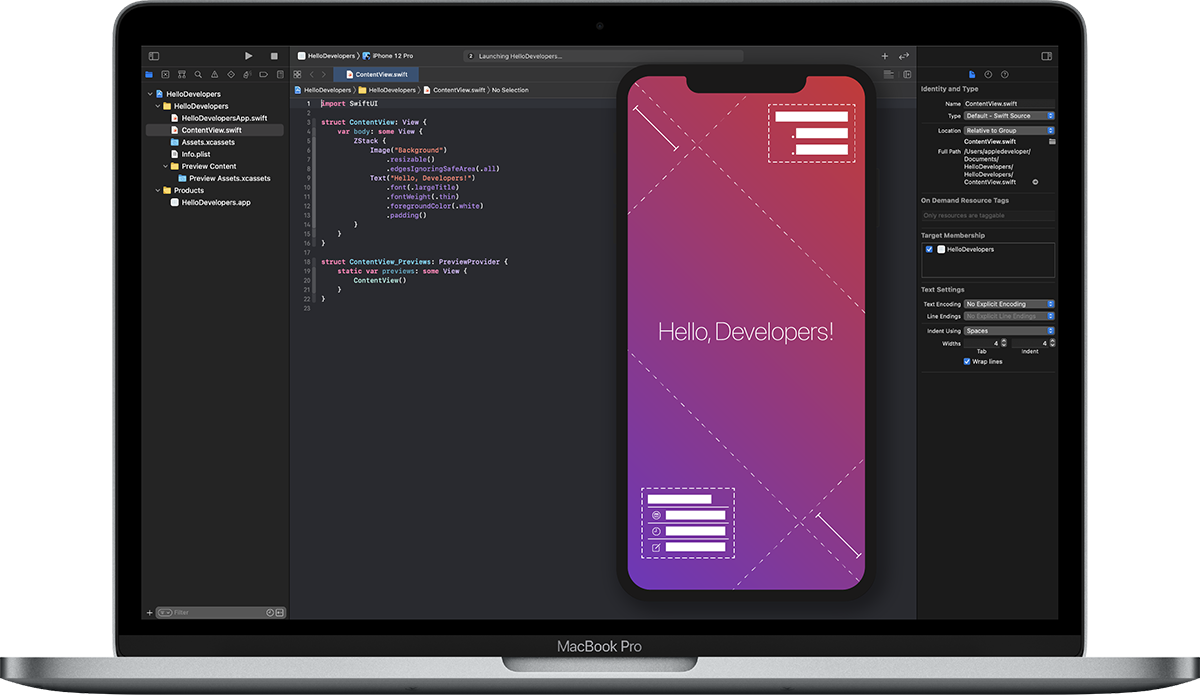
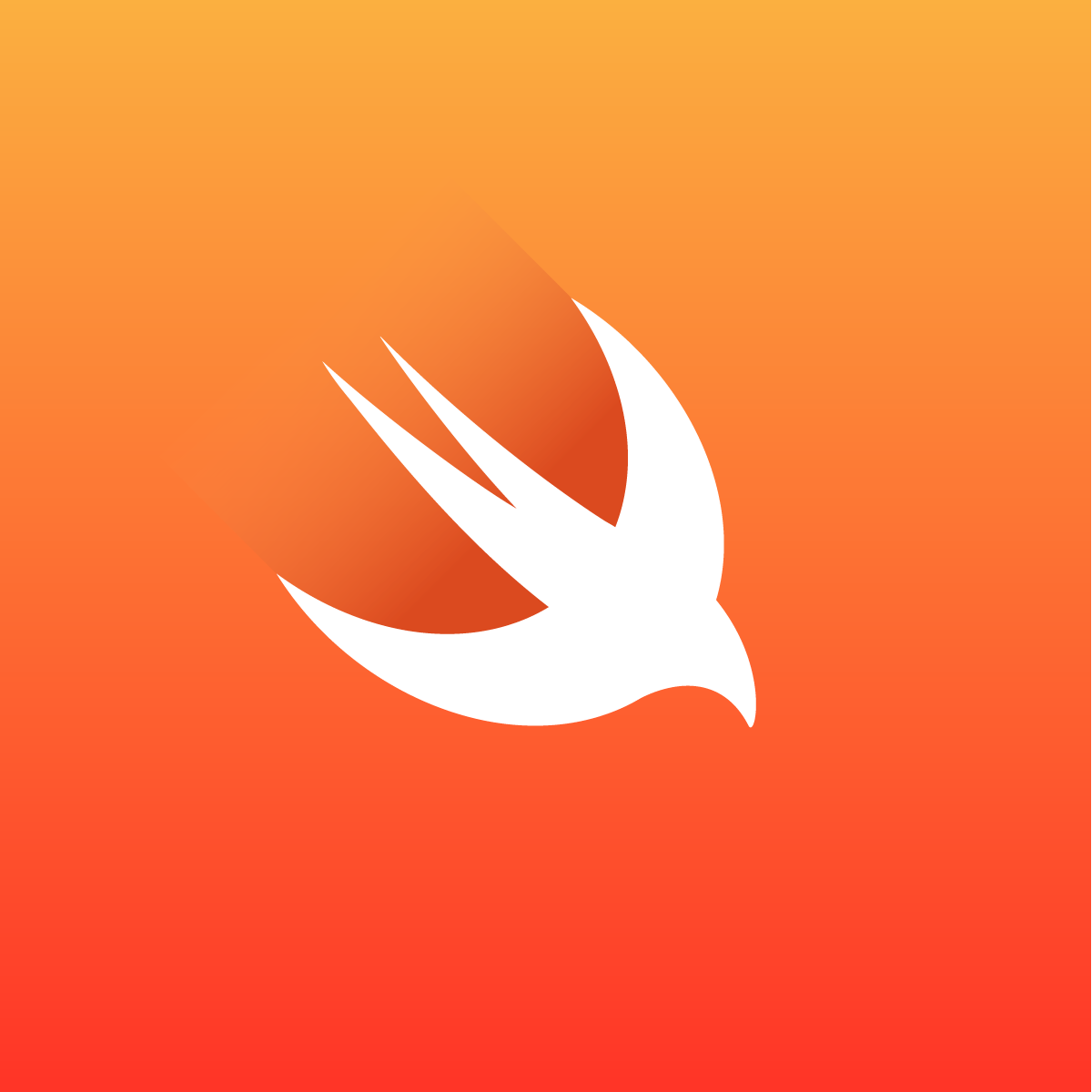
As for the construction of our project, we are using Apple's IDE (Integrated development environment). Using this software, we can write, compile, and easily test our code with a variety of developer tools all within a single easy-to-use graphical user interface (GUI). As for the programming language, we are using Swift, a language made by Apple once again, used to develop software on all of their platforms (iOS, macOS, watchOS, and tvOS).

For the backend portion of our project, we need a database to store all types of information pertaining to the app ranging from typical user & profile data, posts, messages to other types of info such as geolocation and tournament data. This is where Firebase comes in handy. Made by Google, Firebase is a mobile and web application development platform that gives a range of backend services and tools for developers to build and manage their apps. With our project being built for iOS devices using Xcode, Firebase is an excellent choice as it is easy to integrate, gives real-time sychronization when it comes to sending and receiving data across multiple clients and devices, as well as having many security and encryption features when it comes to user authentication and authorization.
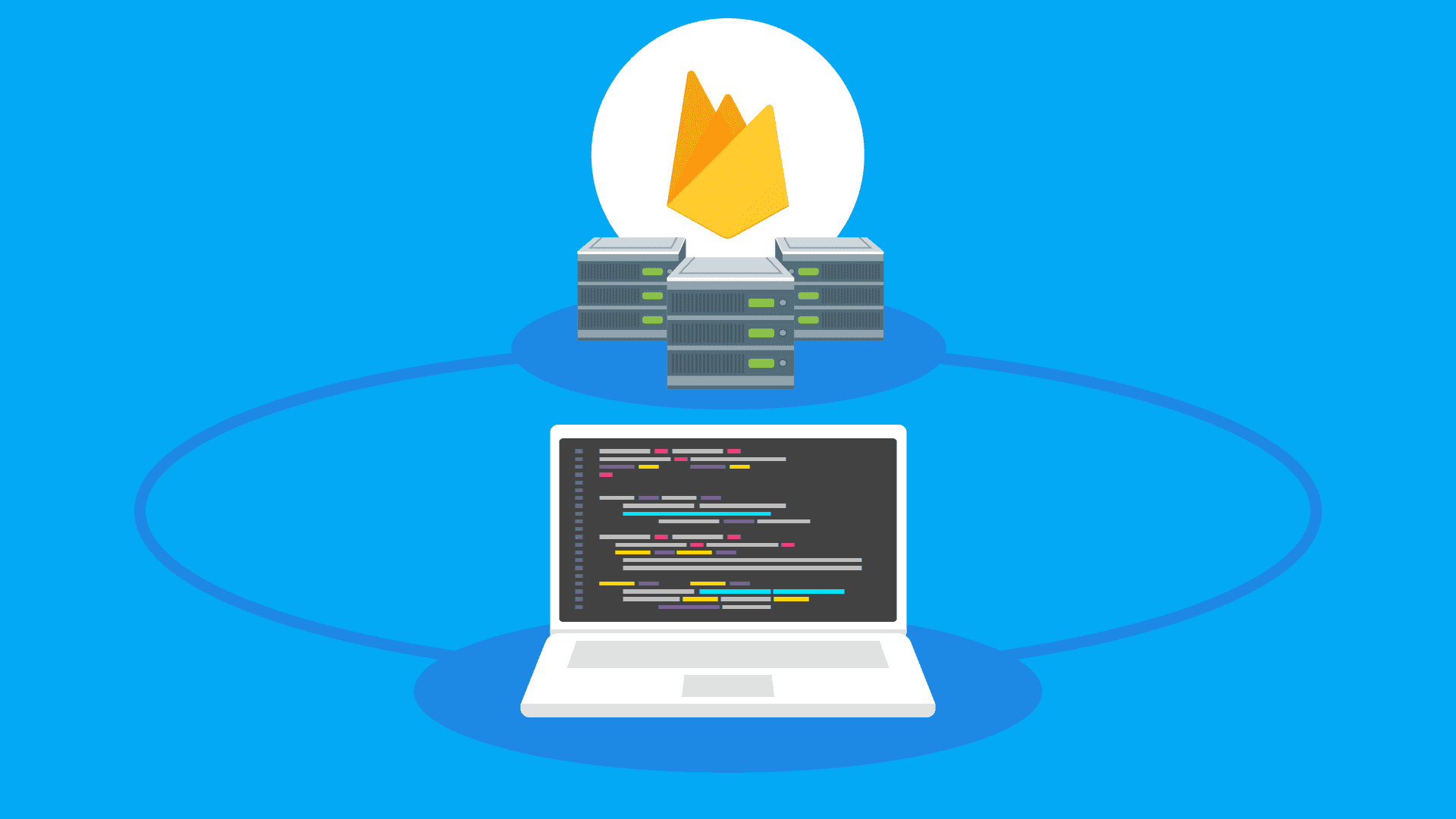
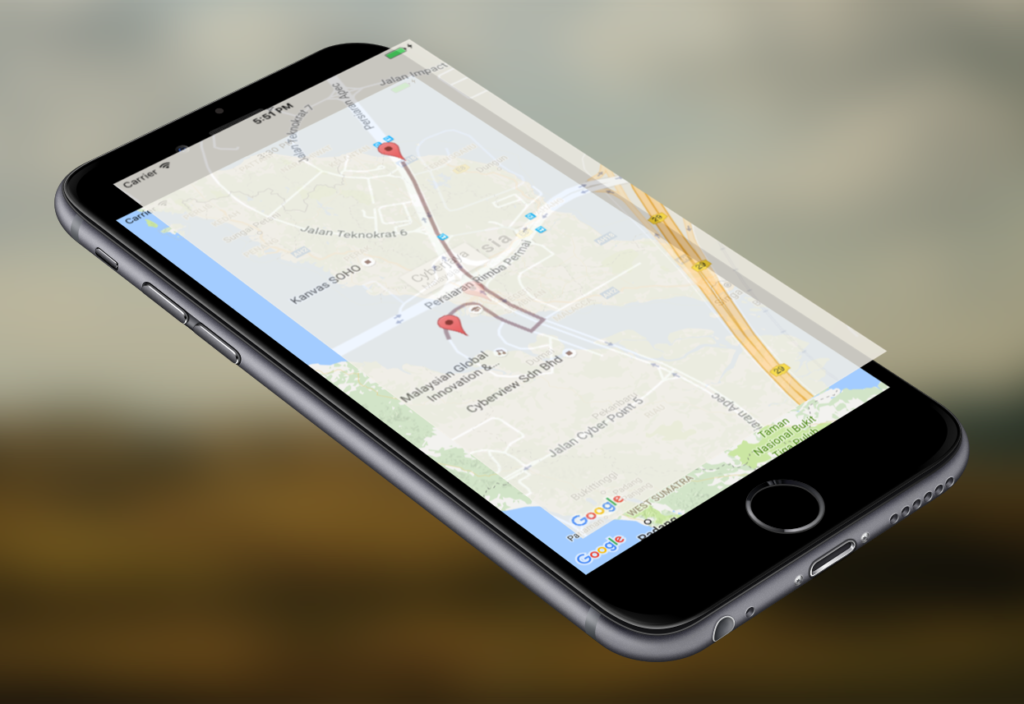

One of our biggest features in the app that sets Mouthpiece apart from a lot of other social media platforms is our geolocation functionality. Being able to see nearby courts and areas with real-time data such as who's there and how many is there is a neat feature to have. Of course when it comes to integrating this functionality, there is nothing better than Google's Map API, a programming interface that allows developers like us to integrate Google Maps functionality into our applications.

As for the construction of the front-end, the front-end engineers utilized Figma, a cloud-based design tool, to design the visual portion of our app. Figma allows for the creation of wireframes for user experience and the design of visually appealing user interface components. Designers can create vector-based graphics, interactive components, and responsive designs that adapt to various screen sizes using Figma. Real-time collaboration features enable multiple designers to work simultaneously on a design file, facilitating team collaboration and feedback.
